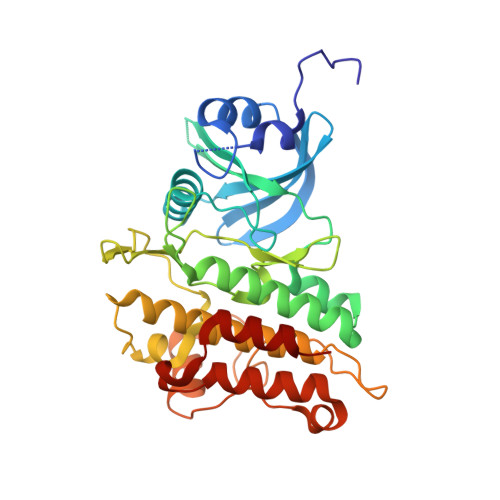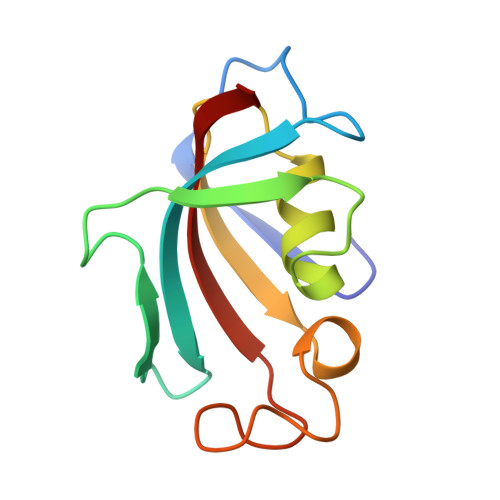Mutant ACVR1 Arrests Glial Cell Differentiation to Drive Tumorigenesis in Pediatric Gliomas.
Fortin, J., Tian, R., Zarrabi, I., Hill, G., Williams, E., Sanchez-Duffhues, G., Thorikay, M., Ramachandran, P., Siddaway, R., Wong, J.F., Wu, A., Apuzzo, L.N., Haight, J., You-Ten, A., Snow, B.E., Wakeham, A., Goldhamer, D.J., Schramek, D., Bullock, A.N., Dijke, P.T., Hawkins, C., Mak, T.W.(2020) Cancer Cell 37: 308-323.e12
- PubMed: 32142668
- DOI: https://doi.org/10.1016/j.ccell.2020.02.002
- Primary Citation of Related Structures:
6I1S - PubMed Abstract:
Diffuse intrinsic pontine gliomas (DIPGs) are aggressive pediatric brain tumors for which there is currently no effective treatment. Some of these tumors combine gain-of-function mutations in ACVR1, PIK3CA, and histone H3-encoding genes. The oncogenic mechanisms of action of ACVR1 mutations are currently unknown. Using mouse models, we demonstrate that Acvr1 G328V arrests the differentiation of oligodendroglial lineage cells, and cooperates with Hist1h3b K27M and Pik3ca H1047R to generate high-grade diffuse gliomas. Mechanistically, Acvr1 G328V upregulates transcription factors which control differentiation and DIPG cell fitness. Furthermore, we characterize E6201 as a dual inhibitor of ACVR1 and MEK1/2, and demonstrate its efficacy toward tumor cells in vivo. Collectively, our results describe an oncogenic mechanism of action for ACVR1 mutations, and suggest therapeutic strategies for DIPGs.
- Princess Margaret Cancer Centre, University Health Network, Toronto, ON M5G 1L7, Canada. Electronic address: jerome.fortin@uhnresearch.ca.
Organizational Affiliation:




















